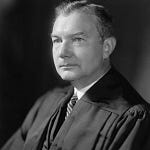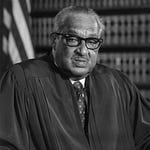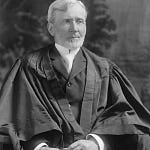This Day in Legal History: Richard and Mildred Loving Arrested
On this day in legal history, July 11, 1958, Richard and Mildred Loving were arrested in Central Point, Virginia, for violating the state’s Racial Integrity Act, which banned interracial marriage. The couple had legally wed in Washington, D.C., but upon returning to Virginia, they were charged with "cohabiting as man and wife, against the peace and dignity of the Commonwealth." Richard, a white man, and Mildred, a Black and Indigenous woman, pled guilty and were sentenced to one year in prison, suspended on the condition that they leave the state for 25 years.
The Lovings relocated to Washington, D.C., but their desire to return home ultimately led to a pivotal civil rights case. In 1963, they wrote to Attorney General Robert F. Kennedy, who referred them to the ACLU. Attorneys Bernard Cohen and Philip Hirschkop took up their case, arguing that Virginia’s law violated the Equal Protection and Due Process Clauses of the Fourteenth Amendment. After years of legal battles, the case reached the U.S. Supreme Court.
In Loving v. Virginia (1967), the Court unanimously struck down laws banning interracial marriage, declaring that "the freedom to marry… may not be infringed by the State." Chief Justice Earl Warren wrote that Virginia's law served no legitimate purpose "independent of invidious racial discrimination." The decision invalidated similar laws in 15 other states.
The Lovings never sought to become civil rights icons—they simply wanted to live as a married couple in their home state. Their quiet determination reshaped American constitutional law, affirming marriage as a fundamental right and setting a legal precedent that continues to influence equal protection jurisprudence.
The 9th U.S. Circuit Court of Appeals temporarily paused a lower court ruling that had blocked President Donald Trump's executive order removing collective bargaining rights for large segments of the federal workforce. U.S. District Judge James Donato had issued the initial injunction in June, finding the executive order likely violated federal employees’ First Amendment rights and targeted unions viewed as adversarial to Trump. The appeals court's administrative stay keeps the order in limbo while it considers the administration’s appeal, with oral arguments scheduled for July 17.
Trump’s order affects 21 federal agencies and would make it easier to discipline or fire employees while restricting union challenges. The order notably broadened national security exceptions to collective bargaining beyond intelligence agencies like the CIA and FBI. Unions argue the move is retaliatory and affects many workers who don’t handle national security matters.
Earlier, a Washington, D.C. judge blocked the same order at seven agencies, including the DOJ and Treasury, but that ruling is also stayed pending appeal. The Trump administration has also filed lawsuits to void existing union contracts, though one such suit by the Treasury was dismissed for lack of standing. A related case remains pending in Texas.
US court pauses block on Trump eliminating union bargaining for federal workers | Reuters
The White House is currently reviewing federal agency layoff plans following a recent U.S. Supreme Court decision that permits large-scale downsizing of the government workforce. Two senior officials confirmed the review is aimed at minimizing future legal challenges by ensuring all plans comply with congressional rules and civil service regulations. Coordination is being handled through the White House Counsel’s Office and the Office of Personnel Management. Although no specific timeline has been announced, officials say the layoffs are an "immediate priority," with a goal to reduce the size of government swiftly.
The ruling, welcomed by the Trump administration, allows agencies to act on plans developed earlier this year under the guidance of the Department of Government Efficiency, led by Elon Musk. However, the administration acknowledged that labor contracts and due process protections still apply, and lawsuits are expected even if legal thresholds are met.
The State Department has already confirmed it will begin issuing termination notices imminently, having proposed nearly 2,000 job cuts in May. Overall, about 260,000 federal employees have already exited through firings, resignations, or early retirements since January. The layoffs are expected to affect more than a dozen departments, including Agriculture, Commerce, and Veterans Affairs.
White House reviews mass federal layoff plans, aims for swift action | Reuters
Mahmoud Khalil, a Columbia University student and permanent U.S. resident, has filed a $20 million claim against the Trump administration, alleging false imprisonment and malicious prosecution. Khalil, a pro-Palestinian activist, was detained for over 100 days by immigration authorities who accused him of undermining U.S.–Israel relations. His legal team submitted the claim under federal rules requiring damages claims to be filed before a lawsuit. Homeland Security dismissed the claim as "absurd," defending its actions as lawful.
Khalil argues his arrest was politically motivated, targeting him for his pro-Palestinian speech, and says he would accept an official apology and a policy change as an alternative to monetary compensation. He was released on bail in June after a federal judge ruled his detention violated his First Amendment rights. The case has drawn widespread attention from civil rights and Palestinian advocacy groups, who accuse the administration of equating criticism of Israel with antisemitism.
Trump has publicly pledged to deport foreign students participating in anti-Israel protests, and Khalil was the first high-profile detainee under this initiative. His lawyers continue to challenge his deportation, and the administration has six months to respond to his compensation claim.
Mahmoud Khalil seeks $20 million from Trump administration over immigration arrest | Reuters
This week’s closing theme is by George Gershwin.
This week’s closing theme is dedicated to one of America’s most iconic composers—George Gershwin, who died on July 11, 1937, at just 38 years old. Though his life was short, Gershwin’s musical legacy is vast, bridging the worlds of classical music and jazz with unprecedented flair. His compositions resonate with a distinctively American voice, and no piece captures that better than Rhapsody in Blue. Premiered in 1924, the work opens with a now-famous clarinet glissando and bursts into a vibrant, restless energy that seems to embody the optimism and chaos of early 20th-century New York.
Commissioned by bandleader Paul Whiteman, Rhapsody in Blue was Gershwin’s first major attempt to merge classical form with jazz idioms. What emerged was a concerto-like work that thrilled audiences and critics alike and marked the beginning of serious recognition for jazz as a concert-hall art form. Gershwin performed the piano solo himself at the premiere, having written much of it in a hurry and leaving some sections to be improvised on the spot.
His sudden death from a brain tumor shocked the music world. It cut short the career of a composer who had already revolutionized American music and was poised to do much more. In works like Porgy and Bess and An American in Paris, Gershwin demonstrated a rare ability to synthesize European traditions with American vernacular music. But Rhapsody in Blue remains his most enduring testament—a collision of elegance, innovation, and vitality.
As we reflect on Gershwin’s passing this week, we close with Rhapsody in Blue, a work that continues to pulse with life nearly a century after its premiere. Its blend of bluesy lyricism and orchestral sweep makes it a fitting tribute to a composer whose voice was silenced too soon.
Without further ado, George Gershwin’s Rhapsody in Blue, enjoy!














